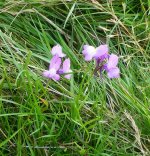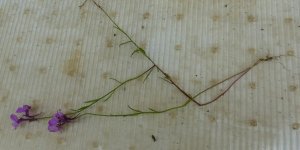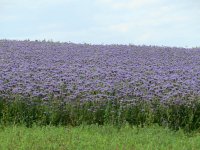According to Stace in the key for Linaria, L. maroccana splits in the first couplet by having spur longer than the rest of the corolla. In all other Linaria species encountered in the UK (which includes L. pelisseriana) the spur is shorter to nearly as long as corolla. I think the OP's plant seems pretty conclusive for L. maroccana now.
Stace gives the vernacular Annual Toadflax for this species. It certainly comes in a variety of colours. My local council use it in quite a few of their pollinator mixes & stray plants away from the obvious plantings are often encountered. I suspect it's a plant we'll see more of as more councils use these mix.
I do find it bizarre they talk of flowering meadows which contain so many exotics including Cosmos, Calendula, garish cornflowers, Californian Poppies, Phacellia, Linum grandiflorum & many others!






